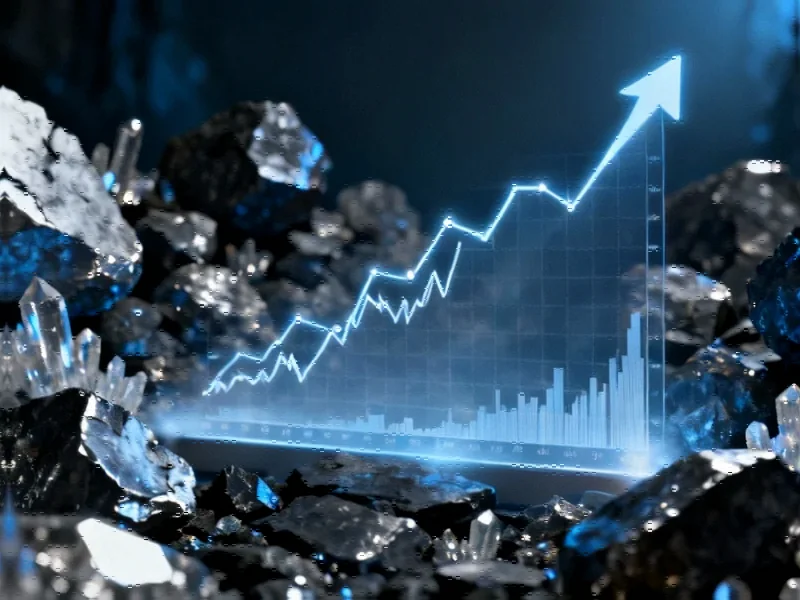The Strategic Shift in Rare Earth Markets
Global markets are witnessing a significant transformation in the rare earth sector as nations accelerate efforts to establish independent supply chains. This strategic pivot comes as geopolitical tensions and export restrictions highlight the vulnerabilities of relying on dominant producers, particularly China, which controls approximately 70% of global production according to recent U.S. Geological Survey data.
Understanding Rare Earth Criticality
Rare earth elements comprise seventeen metallic minerals essential to modern technology and clean energy transitions. These elements power everything from electric vehicle motors and wind turbines to sophisticated military equipment and consumer electronics. Their unique magnetic and luminescent properties make them irreplaceable in numerous high-tech applications, creating what industry experts describe as a “technological dependency” that spans multiple sectors.
The recent surge in U.S. rare earth stock performance reflects growing investor confidence in domestic production capabilities as nations challenge existing supply chain dynamics. This market movement underscores a broader recognition that rare earth independence has become both an economic imperative and national security priority.
China’s Dominance and Global Response
China’s position in the rare earth market developed over decades through strategic investments and favorable geology. The country not only leads in production but also maintains significant processing capabilities that other nations are now racing to develop. This concentration of supply has prompted what analysts describe as a “global awakening” to supply chain risks.
Michael Silver, CEO of American Elements, recently emphasized that while the U.S. maintains sufficient heavy rare earth metals for military applications, commercial technologies face significant exposure. “The supply chain squeeze could impact EVs, lasers, and quite a lot of commercial technology,” Silver noted during his CNBC appearance, highlighting the bifurcated nature of current supply security.
Infrastructure Developments Supporting Supply Chain Diversification
Substantial infrastructure investments are underway globally to support alternative rare earth supply chains. Recent strategic port expansion initiatives demonstrate how nations are positioning critical infrastructure to facilitate mineral processing and transportation outside traditional channels. These developments represent crucial building blocks in creating resilient supply networks that can withstand geopolitical pressures.
The diversification effort extends beyond mining to include processing, separation, and manufacturing capabilities. Countries are investing in circular economy approaches, including recycling programs that recover rare earths from electronic waste, though these efforts currently supplement rather than replace primary production.
Regulatory and Enforcement Dimensions
As the rare earth sector evolves, regulatory frameworks and enforcement mechanisms are adapting to new challenges. Recent international enforcement actions targeting sophisticated supply chain disruptions illustrate the complex landscape facing market participants. These coordinated efforts aim to protect developing alternative supply chains from emerging threats while ensuring compliance with evolving trade regulations.
Investment and Innovation Driving Change
The market response to supply chain concerns has been substantial, with both public and private sectors mobilizing resources. Investment is flowing into exploration, processing technology development, and substitution research aimed at reducing dependency on the most critical elements. Simultaneously, advances in extraction and separation technologies are making previously uneconomic deposits more viable.
Industry observers note that current market trends reflect a long-term structural shift rather than temporary market fluctuations. The continued focus on related innovations in processing and recycling indicates that the rare earth sector is undergoing fundamental transformation that will reshape global supply dynamics for years to come.
Future Outlook and Challenges
Building independent rare earth supply chains presents significant technical, economic, and environmental challenges. The processing of rare earth ores requires sophisticated facilities and generates waste streams that must be carefully managed. Additionally, developing the necessary workforce expertise represents another critical hurdle.
Despite these challenges, the strategic imperative appears to be driving sustained commitment across multiple nations. As one industry analyst noted, “The events of recent years have demonstrated that rare earth security is no longer just an economic concern—it’s become a fundamental component of technological sovereignty and national security planning worldwide.”
The ongoing evolution of industry developments suggests that the rare earth landscape will continue to transform as technological advances and strategic investments gradually reshape global supply networks, creating new opportunities while mitigating longstanding dependencies.
This article aggregates information from publicly available sources. All trademarks and copyrights belong to their respective owners.
Note: Featured image is for illustrative purposes only and does not represent any specific product, service, or entity mentioned in this article.
